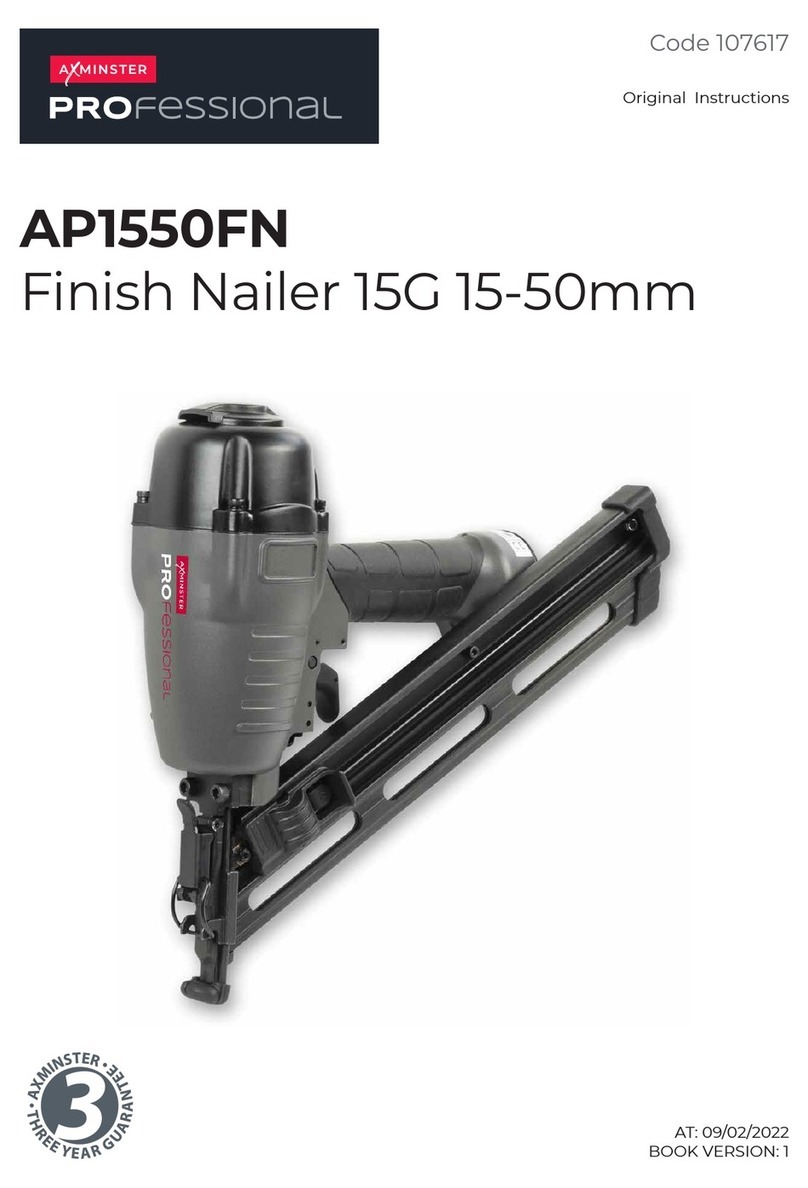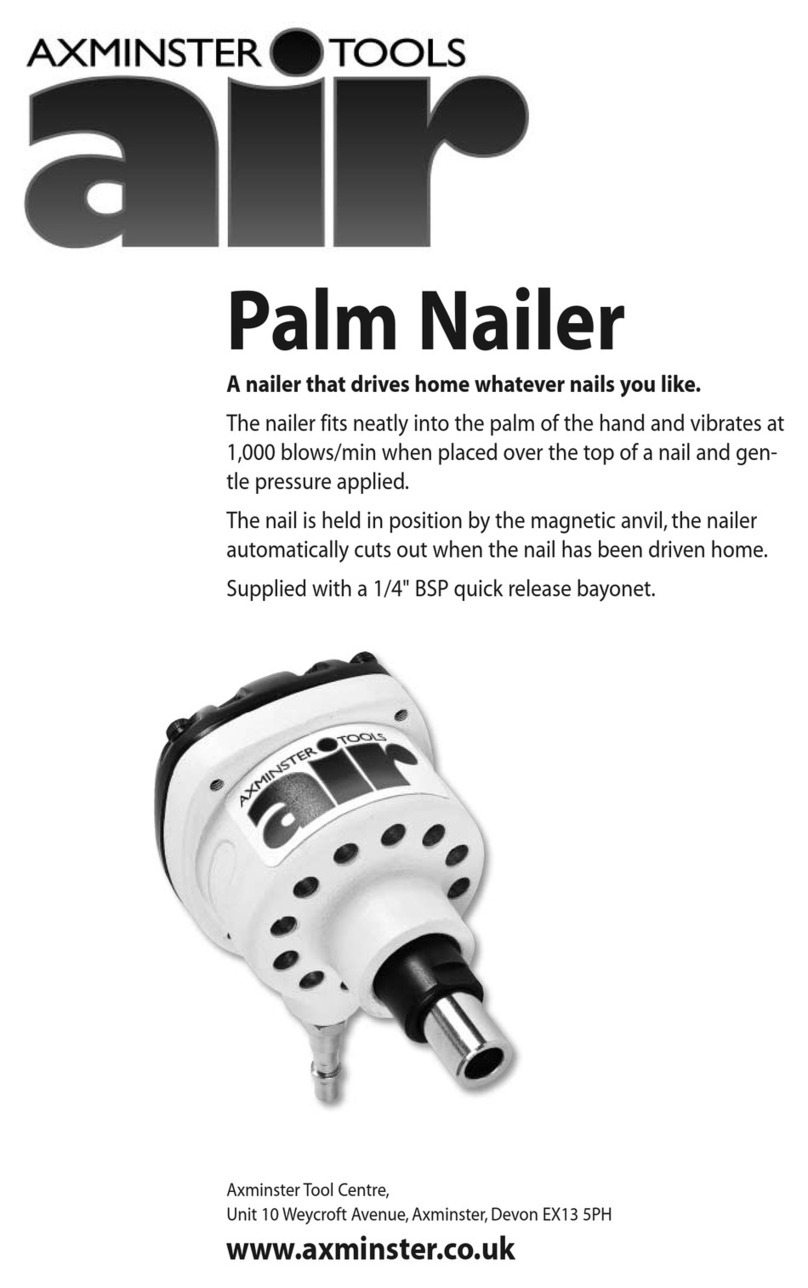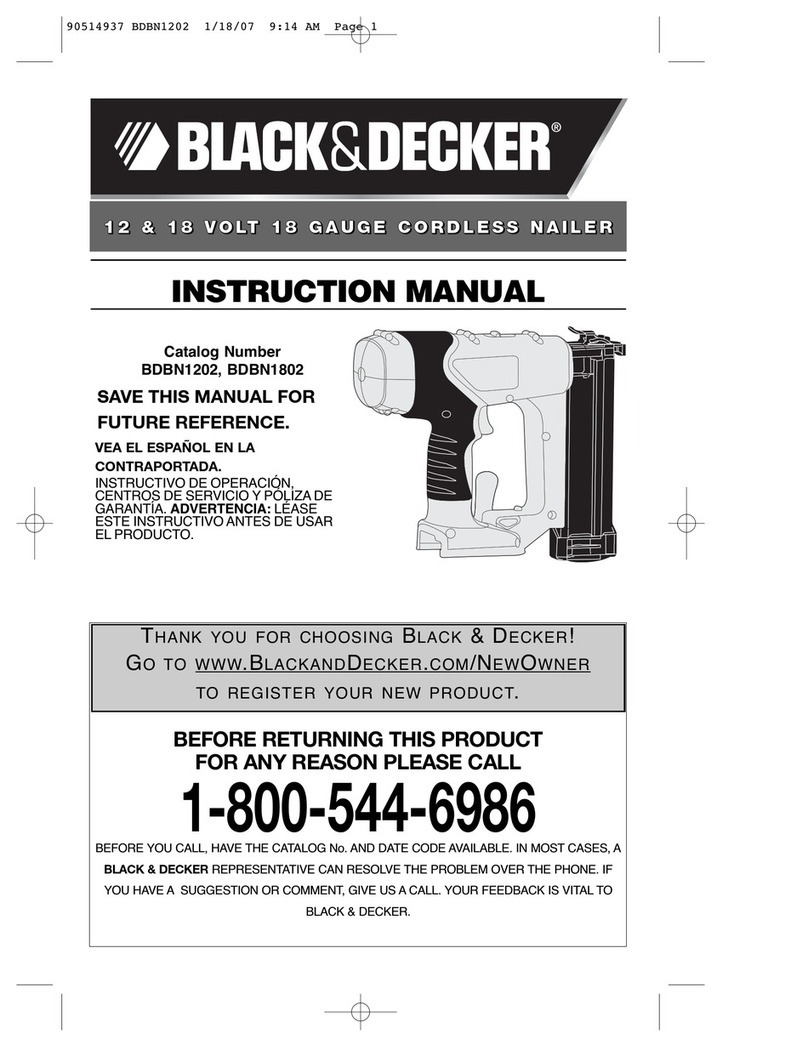08
General Safety Precautions for Nailers...
1. KEEP WORK AREA CLEAN. Cluttered areas
invite injuries.
2. KEEP CHILDREN AWAY. All children should be
kept away from the work area. Don't let them
handle the tool.
3.PRESCRIPTION MEDICATION. Read the
warning labels on all medicines to determine if
your judgment or reflexes would be impaired. If
there is any doubt, do not attempt to operate
this tool.
4. USE EYE PROTECTION. Eye protection should
conform to BSI specifications and provide
protection against flying debris from the front
and the side. Eye protection should be worn
when loading, unloading, servicing or operating
this tool.
5. USE EAR DEFENDERS. Repetitive high noise
levels can damage hearing. If the work area in
which you are operating has excessively high
noise levels, wear ear protection.
6. WEAR APPROPRIATE CLOTHING. Protective
gloves and non-skid footwear/safety shoes are
recommended when operating this tool. Don't
wear loose clothing or jewellery. They can get
caught in moving parts. If you wear your hair in
a long style, a safety helmet, hat, protective hair
covering or even a sweatband will help to
minimise the chance of hair being caught up in
the tool.
8. DO NOT OVERREACH. Keep proper footing
and balance at all times, do not over reach,
especially when working from ladders or towers,
the extra time required to reposition the tower or
ladder is a good trade off against a potentially
crippling fall.
9. CHECK THE TOOL FOR DAMAGE. Before using
the tool, check for damage, any part that
seems damaged should be carefully checked to
determine that it operates properly and will
perform its intended function. If there is any
doubt, have the tool repaired and tested by a
suitably qualified person.
10. REPLACEMENT PARTS AND ACCESSORIES.
When servicing, only use approved replacement
parts. Only fit the approved accessories intended
for use with this tool.
11. STAY ALERT. Watch what you are doing. Use
common sense, do not operate any tool if you
are tired or subject to distraction, a nailer fired
into any part of your anatomy can cause serious
injury.
12. STORE IDLE EQUIPMENT. When not in use,
remove the fuel cell and battery cartridge, the
tool should be cleaned, unloaded, lightly oiled,
stowed away in its carrycase, and stored away
in a dry location to prevent the possibility of
rusting.The storage position should be out
of reach of children
13. CHECK. Walls, cellings, floors and roofing
carefully to avoid possible electrical shocks,
gas leakage, etc. caused by stricking live wires,
conduits or gas pipes.
14. DO NOT allow uninstructed persons to use
the tool.
15. BE AWARE OF OTHER PEOPLE. Make sure
no one is near by be fore using the nailer. Nails
may rip through or fly off, causing serious injury.
ON ROOFTOPS and other high locations, nail as
you move forward, it’s very easy to loose your
footing if you are nailing while moving
backwards.
A NAIL can become bent or the tool can become
jammed if you mistakenly nail on top of another
nail or if you strike a knot in the wood.The nail
can be thrown causing injury to someone close
by.
ALWAYS. Use nails recommended in our
catalogue or no our web site.
WARNING: The warnings, cautions
and instructions discussed in this
instruction manual cannot cover all possible
conditions and situations that may occur. It
must be understood by the orematic that
COMMON SENSE AND CAUTION ARE
FACTORS WHICH CANNOT BE BUILT INTO
THIS TOOL. THEY MUST BE APPLIED BY THE
OPERATOR.
!




























